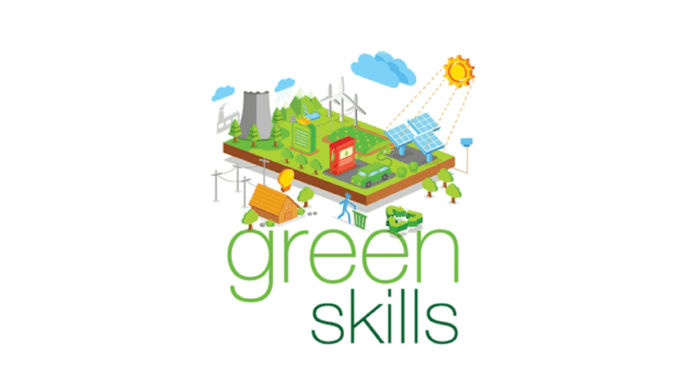The race to avert climate catastrophe has opened up a vast landscape of green jobs, but millions still need to be fulfilled due to a critical green skills gap. This transition hinges on a crucial factor – green skills.
This stark reality came to light at COP28, the recent UN climate summit, where experts and industry leaders grappled with the challenge of equipping the workforce for a sustainable future.
The headlines from COP28 were ambitious: tripling renewable energy capacity by 2030, slashing emissions, and securing vital climate finance. Yet, these goals hinge on a crucial factor – people. We need architects who can design energy-efficient buildings, engineers who can build wind farms and solar grids, and technicians who can install and maintain these new technologies. Millions of such green jobs await filling, offering promising careers and contributing to a healthier planet.
The problem, however, lies in the mismatch between existing skills and the demands of these emerging green sectors. The workforce needs more knowledge and training to thrive in these new roles. Traditional industries are shedding jobs as fossil fuels lose ground, leaving many workers vulnerable to unemployment without the skills to transition into the green economy.
This green skills gap poses a major threat to the success of the green transition. LinkedIn co-founder Allen Blue, who was interviewed on the sidelines of COP28, aptly put it: “We have exciting language coming out of COP28, but without the right skills, these goals are just words on paper.” He emphasized the urgent need for coordinated efforts from governments, educators, and businesses to bridge this gap and ensure a smooth transition to a green future.
Several promising initiatives are already underway. Governments are investing in green skills training programs, universities are revising curricula to incorporate sustainability principles, and private companies are partnering with educational institutions to offer specialized training courses. For instance, the European Union has launched the “Green Talent Pool” initiative to equip 300,000 people with green skills by 2025.
However, the scale of the challenge necessitates a more comprehensive approach. Experts at COP28 called for greater collaboration between public and private sectors, with governments providing financial incentives for training programs and businesses offering apprenticeships and on-the-job training opportunities. Additionally, promoting awareness about green careers among vulnerable communities, particularly women and minorities, is crucial to diversifying the green workforce and ensuring equitable access to these new opportunities.
The green revolution isn’t just about saving the planet; it’s about rebuilding it, job by job. While the transition poses challenges like bridging the skills gap, it also unleashes incredible potential. Imagine revitalized communities powered by renewable energy, new jobs like wind turbines across the landscape, and individuals empowered to build a brighter future for all. This isn’t a dream; it’s a reality waiting to be claimed.
Remember, finding your niche in the green revolution isn’t just about landing a job; it’s about becoming a part of something bigger, a force for positive change that leaves a lasting impact on our planet and its people. Head over to our blog’s Job Section and explore exciting possibilities and opportunities that await.
Important points:
- Millions of green jobs are available, but a skills gap prevents people from filling them.
- This skills gap threatens the success of the green transition.
- Governments, educators, and businesses need to collaborate to bridge the gap.
- Initiatives like the EU’s “Green Talent Pool” are promising but need scaling up.
- Promoting awareness and equal access to green careers is crucial.


